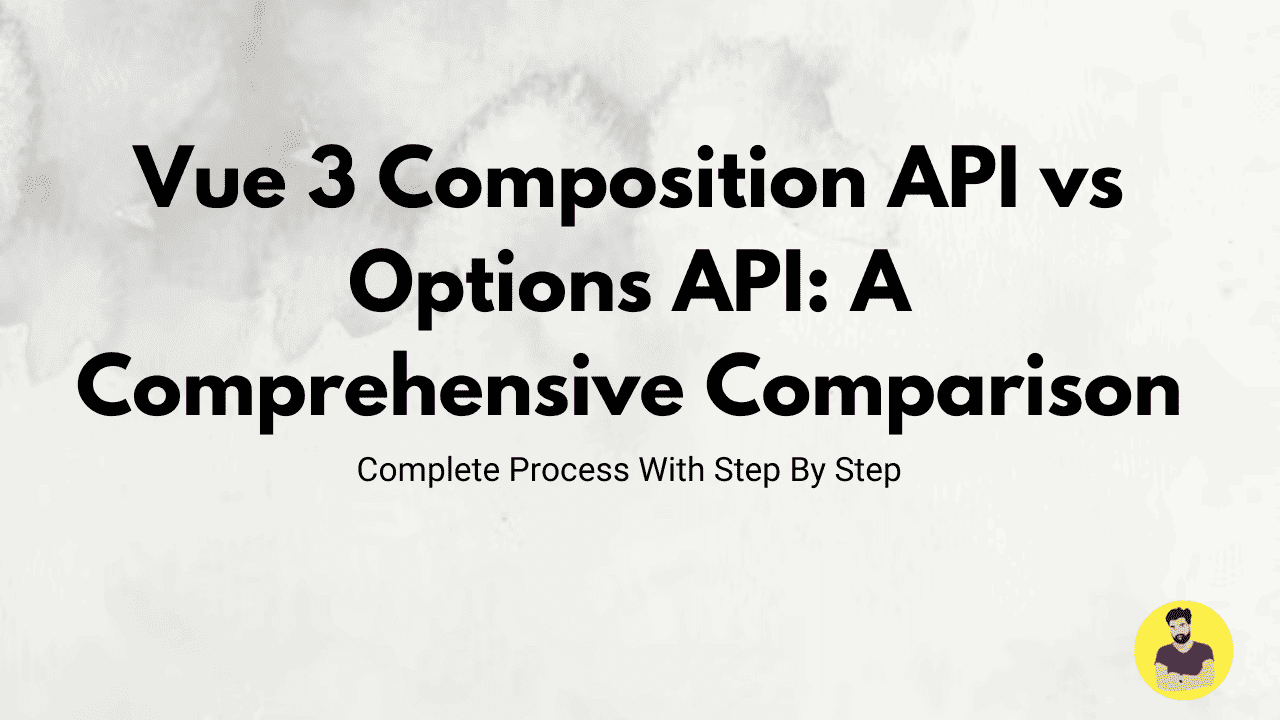
Vue 3 Composition API vs Options API: A Comprehensive Comparison
Vue.js has long been a favorite among developers for building modern, reactive web applications. With the release of Vue 3, a major change was introduced: the Composition API. This new API provides an alternative to the traditional Options API, which had been the main way to create Vue components. The Composition API was introduced to solve limitations in the Options API, especially in larger, more complex applications. In this article, we'll compare the two APIs step by step, with examples, and help you determine when to use each.
Step-by-Step Comparison
1. Basic Overview: What Are the APIs?
Options API: The Options API organizes a Vue component using specific properties like data, methods, computed, and watch. It’s a declarative approach that makes it easy to understand and use, especially for smaller applications.
Example: Options API
<template>
<div>
<p>{{ message }}</p>
<button @click="updateMessage">Change Message</button>
</div>
</template>
<script>
export default {
data() {
return {
message: "Hello, Vue!"
};
},
methods: {
updateMessage() {
this.message = "Message updated using Options API!";
}
}
};
</script>Composition API: The Composition API groups code by logical features. It introduces new reactive APIs such as ref(), reactive(), and computed(). This approach is more flexible, especially in large applications where component logic can become more complex.
Example: Composition API
<template>
<div>
<p>{{ message }}</p>
<button @click="updateMessage">Change Message</button>
</div>
</template>
<script>
import { ref } from 'vue';
export default {
setup() {
const message = ref('Hello, Vue!');
const updateMessage = () => {
message.value = 'Message updated using Composition API!';
};
return {
message,
updateMessage
};
}
};
</script>2. Code Structure and Organization
Options API: Code is organized by feature type: data, methods, computed, etc. This makes the code easy to follow but less flexible in large applications.
Composition API: Code is organized by feature or functionality. This allows for more modularity and better scalability in large projects.
3. Ease of Learning
Options API: The Options API is easier to learn and is better for developers who are new to Vue.js or who are building smaller projects. Its structure is straightforward and intuitive.
Composition API: The Composition API requires a deeper understanding of Vue’s reactivity system. It also introduces new concepts, such as ref, reactive, and lifecycle hooks within the setup() function, which can be challenging for beginners.
4. Reusability and Maintainability
Options API: Reusability in the Options API is limited. While mixins can be used, they can lead to code conflicts and make the code harder to maintain.
Composition API: Reusability is one of the strengths of the Composition API. Using composable functions, you can extract and reuse logic easily across components.
Example of a Reusable Function (Composable) in Composition API:
// useMessage.js (Composable)
import { ref } from 'vue';
export function useMessage() {
const message = ref('Hello from Composables!');
const updateMessage = () => {
message.value = 'Message updated using Composition API!';
};
return { message, updateMessage };
}
// Component using the composable
<template>
<div>
<p>{{ message }}</p>
<button @click="updateMessage">Change Message</button>
</div>
</template>
<script>
import { useMessage } from './useMessage';
export default {
setup() {
const { message, updateMessage } = useMessage();
return { message, updateMessage };
}
};
</script>5. TypeScript Integration
Options API: While you can use TypeScript with the Options API, it doesn’t fully support type inference, especially with the data and methods options.
Composition API: The Composition API works well with TypeScript, as it uses function-based logic, enabling better type inference and improved support for complex types.
6. Performance Considerations
Options API: For small to medium projects, the Options API performs well. However, in large projects with deeply nested components, performance may degrade due to less control over reactivity.
Composition API: The Composition API improves performance by allowing for more fine-grained reactivity. Components only re-render when the specific piece of state they depend on changes, rather than re-rendering the entire component.
7. Use Cases for Each API
Options API: Ideal for smaller applications, beginners, and situations where you need a simple, declarative way to define components.
Composition API: Best suited for large-scale applications, teams working with TypeScript, and when you need to share complex logic across multiple components.
Conclusion
In Vue 3, both the Options API and the Composition API offer powerful ways to build components, but they serve different use cases. The Options API remains the best choice for small projects or those who are new to Vue, as it’s easy to use and understand. On the other hand, the Composition API excels in larger projects, offering greater flexibility, reusability, and scalability. For developers looking to build complex applications, especially with TypeScript, the Composition API is a more modern and powerful approach. Ultimately, choosing between the two depends on the project’s complexity, the development team’s familiarity with Vue, and specific use cases.
Related Tutorials
Vue 3 Composition API vs Options API: A Comprehensive ComparisonFetching and Displaying Data from APIs in Vue.js with Axios
Building a Todo App in Vue.js with Local Storage Integration
Handling Forms and Validation in Vue.js Using VeeValidate
State Management in Vue.js Applications Using Vuex